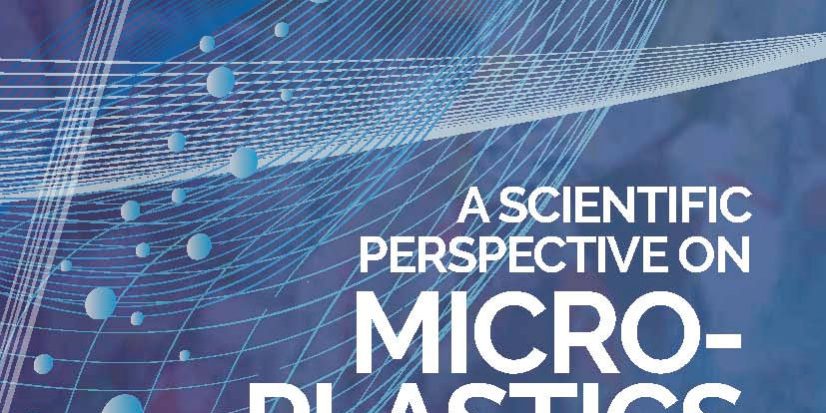The best available evidence suggests that microplastics and nanoplastics do not pose a widespread risk to humans or the environment, except in small pockets. But that evidence is limited, and the situation could change if pollution continues at the current rate.
This is the verdict of a group of experts, nominated by academies across Europe, in an Evidence Review Report published today by SAPEA. Their report will inform the forthcoming Scientific Opinion from the European Commission’s Group of Chief Scientific Advisors, due in 2019. The Opinion in turn will be delivered directly to European Commissioners to help inform policy-making.
The SAPEA report’s authors draw on a comprehensive examination of the best available evidence from the natural sciences and computer modelling, as well as social, political and behavioural sciences. They highlight that microplastics – tiny particles under 5mm in length – are already present across air, soil and sediment, freshwaters, seas and oceans, plants and animals, and in several components of the human diet. These particles come from a variety of sources, including plastic products, textiles, fisheries, agriculture, industry and general waste.
The report also notes that, in controlled experiments, high concentrations of these particles have been shown to cause physical harm to the environment and living creatures, including inducing inflammation and stress.
However, the authors point out that concentration levels measured in the real world are well below this threshold – though there are also limitations in the measurement methods currently available.
Meanwhile, in other parts of the environment, there is have no reliable evidence about the levels or effects of these particles. This is true especially of nanoplastics, which are very difficult to measure and evaluate.
Professor Bart Koelmans, chair of the SAPEA working group that wrote the report, said
“The evidence about nano- and microplastics remains uncertain, and it is by its nature complex, but so far there is no good reason to think they pose widespread risks to humans or the environment.
“Of course, a lack of evidence for risk doesn’t mean we should assume that there is no risk. As our social science colleagues have pointed out, it’s vital that we communicate clearly about uncertainties in the evidence, rather than just assuming that everything is fine just because we don’t know for sure.
“But one thing is for certain: concentrations of microplastics in the environment are increasing. If we keep polluting at the current rate, we will have a real problem in the future.”
Professor Sierd Cloetingh, Chair of the SAPEA board, added:
“Our report is extremely timely, given the significant level of interest in this critically-important topic. SAPEA has brought together world-class expertise from across a wide range of disciplines to consider the issues at stake.
“I look forward to SAPEA’s future collaborations with the European Commission’s Group of Chief Scientific Advisors, ensuring that scientific advice is informed by expertise from academies across Europe.”
The new SAPEA report is unique because it examines evidence from across the whole spectrum of science, including social and behavioral sciences. Such interdisciplinary insights are a major strength of SAPEA’s work, helping to indicate how policies to tackle problems can be made more effective through a good understanding of the interplay between policy-making and citizens’ behavior.
Notes for editors
SAPEA (Science Advice for Policy by European Academies) is an integral part of the European Scientific Advice Mechanism (SAM), which provides independent, interdisciplinary, and evidence-based scientific advice on policy issues to the European Commission. SAPEA brings together outstanding knowledge and expertise from over 100 academies, young academies, and learned societies in over 40 countries across Europe. Funded through the EU’s Horizon 2020 programme, the SAPEA consortium comprises Academia Europaea (AE), All European Academies (ALLEA), the European Academies’ Science Advisory Council (EASAC), the European Council of Academies of Applied Sciences, Technologies and Engineering (Euro-CASE), and the Federation of European Academies of Medicine (FEAM).
European Commission Scientific Advice Mechanism: The Scientific Advice Mechanism Group of Chief Scientific Advisors was established on 16 October 2015 to support the Commission with high quality, timely and independent scientific advice for its policy-making activities. The Scientific Advisors are seven independent eminent scientists, appointed in their personal capacity. The Group draws on a wide range of scientific expertise, among others through a close relationship with European and national academies (through the Scientific Advice to Policy by European Academies – SAPEA – project, funded through Horizon 2020, the EU’s research and innovation programme). Through their scientific advice, the Scientific Advisors contribute to the quality of EU legislation and complement the existing science advisory structures of the Commission, which include the Joint Research Centre (JRC), the European Agencies as well as specialised expert groups. https://ec.europa.eu/research/sam
Working Group Members: SAPEA selected working group members across a range of disciplines to contribute to the Evidence Review Report. The group was chaired by Prof. Bart Koelmans University of Wageningen, Netherlands and Dr Sabine Pahl, University of Plymouth, United Kingdom. A full list of Working Group members is available at www.sapea.info/microplastics








